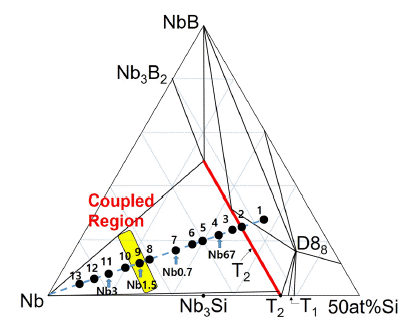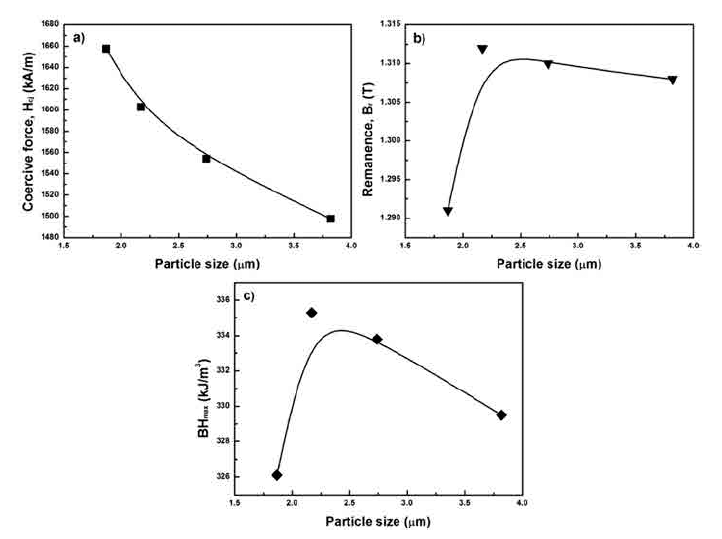Search
- Page Path
- HOME > Search
- [Korean]
- Fabrication of Nb-Si-B Alloys Using the Pulverized Nb-T2 Alloy Powder
- Min-Ho Cho, Sung-Jun Kim, Hyun-Ji Kang, Sung-Tag Oh, Young Do Kim, Seong Lee, Myung Jin Suk
- J Korean Powder Metall Inst. 2019;26(4):299-304. Published online August 1, 2019
- DOI: https://doi.org/10.4150/KPMI.2019.26.4.299

- 664 View
- 5 Download
-
 Abstract
Abstract
 PDF
PDF Nb-Si-B alloys with Nb-rich compositions are fabricated by spark plasma sintering for high-temperature structural applications. Three compositions are selected: 75 at% Nb (Nb0.7), 82 at% Nb (Nb1.5), and 88 at% Nb (Nb3), the atomic ratio of Si to B being 2. The microstructures of the prepared alloys are composed of Nb and T2 phases. The T2 phase is an intermetallic compound with a stoichiometry of Nb5Si3-xBx (0 ≤ x ≤ 2). In some previous studies, Nb-Si-B alloys have been prepared by spark plasma sintering (SPS) using Nb and T2 powders (SPS 1). In the present work, the same alloys are prepared by the SPS process (SPS 2) using Nb powders and hypereutectic alloy powders with composition 67at%Nb-22at%Si-11at%B (Nb67). The Nb67 alloy powders comprise T2 and eutectic (T2 + Nb) phases. The microstructures and hardness of the samples prepared in the present work have been compared with those previously reported; the samples prepared in this study exhibit finer and more uniform microstructures and higher hardness.
- [Korean]
- Microstructure and Magnetic Properties of Nd-Fe-B Sintered Magnet with the Variation of Particle Size
- Dongwon Shin, Dong-Hwan Kim, Young-Cheol Park, Jeong-Gon Kim
- J Korean Powder Metall Inst. 2016;23(6):447-452. Published online December 1, 2016
- DOI: https://doi.org/10.4150/KPMI.2016.23.6.447

- 419 View
- 2 Download
-
 Abstract
Abstract
 PDF
PDF Neodymium-iron-boron (Nd-Fe-B) sintered magnets have excellent magnetic properties such as the remanence, coercive force, and the maximum energy product compared to other hard magnetic materials. The coercive force of Nd-Fe-B sintered magnets is improved by the addition of heavy rare earth elements such as dysprosium and terbium instead of neodymium. Then, the magnetocrystalline anisotropy of Nd-Fe-B sintered magnets increases. However, additional elements have increased the production cost of Nd-Fe-B sintered magnets. Hence, a study on the control of the microstructure of Nd-Fe-B magnets is being conducted. As the coercive force of magnets improves, the grain size of the Nd2Fe14B grain is close to 300 nm because they are nucleation-type magnets. In this study, fine particles of Nd-Fe-B are prepared with various grinding energies in the pulverization process used for preparing sintered magnets, and the microstructure and magnetic properties of the magnets are investigated.
TOP
 KPMI
KPMI

 First
First Prev
Prev


